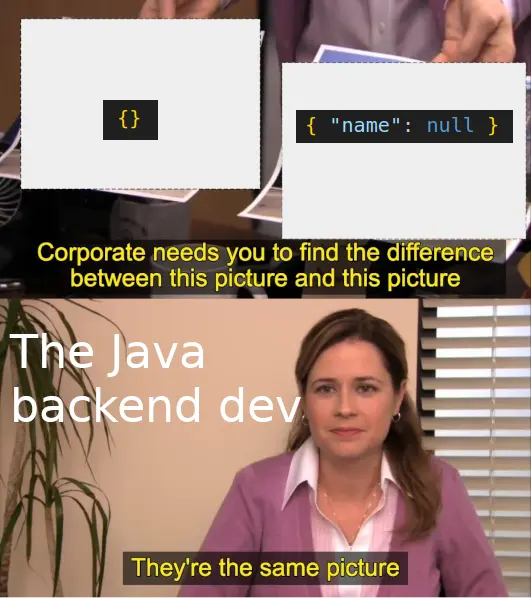If you’re branching logic due to the existence or non-existence of a field rather than the value of a field (or treating undefined different from null), I’m going to say you’re the one doing something wrong, not the Java dev.
These two things SHOULD be treated the same by anybody in most cases, with the possible exception of rejecting the later due to schema mismatch (i.e. when a “name” field should never be defined, regardless of the value).
